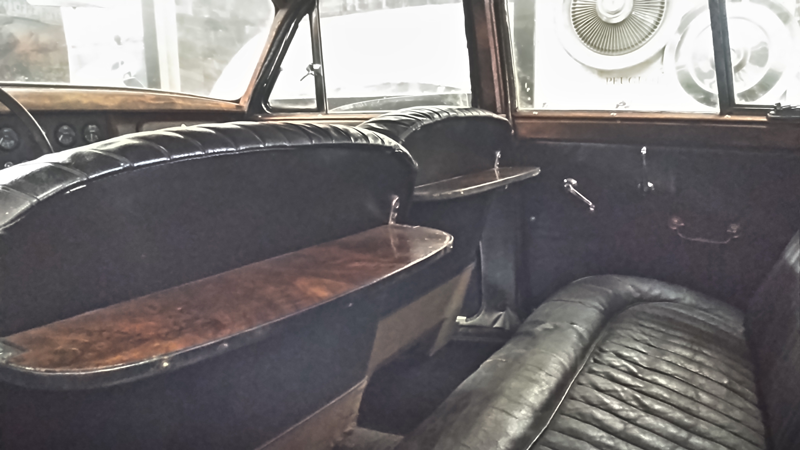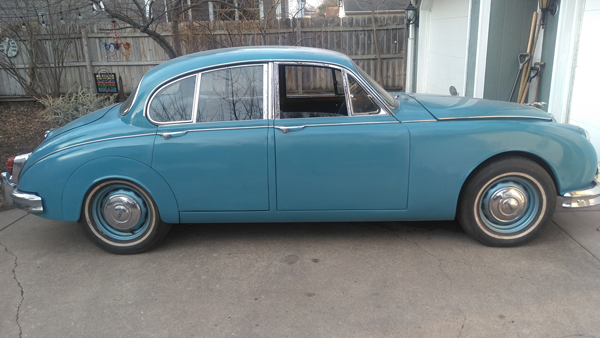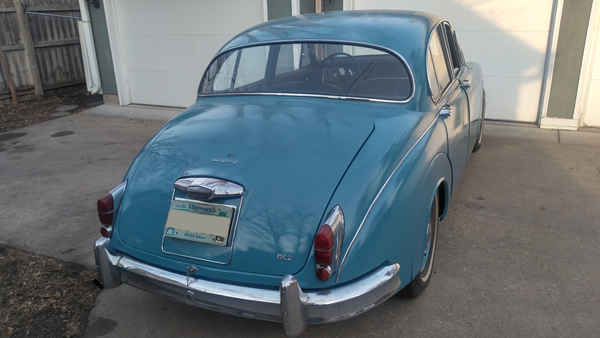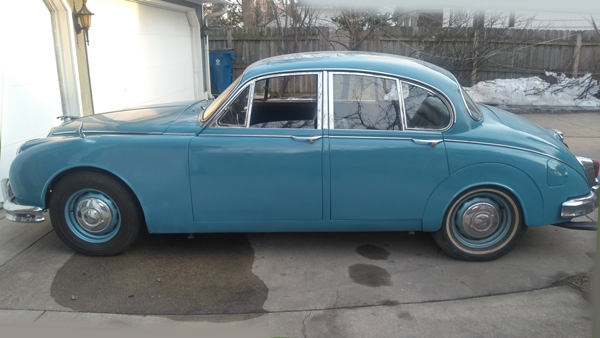– By Eric Fantin –
First a quick background on one of the most iconic Jaguar sedans. The Mark 2 sedan line is an evolution off the Mark 1 (introduced in 1955). Production started in 1959 It was available with the 2.4 and 3.4 motor and later on with the 3.8. The 3.8 engine produced 220 hp on a relatively lighter and smaller body and became the original sports sedan (some Alfa aficionados might demure). It was a great success in sales and racing. The US spec cars were often fitted with automatic transmission and power steering. Around 90,000 cars were produced during its 10-year production span. A great success for Jaguar!
I ended up with this car as a dare more than anything else. A good friend of mine (a car nut himself) bought this Mark II in the early 90’s for little money, the car needed some TLC, in short order, he made it drivable and proceeded to enjoy it for couple years. Eventually some minor mechanical ailments started to creep up and the body needed some body work, so he decided to embark in a refurbishment, not a full restoration. He proceeded to strip the body, remove the rust, dismantle part of the interior and weld the appropriate body parts needed. Then life got in the way and the work stopped. It was then stored in various spots over the last 25 years or so. He was going to part out the car because he was never going to complete it. Jokingly I mentioned that we should see if the engine was free and if so I would fiddle with to see what to do with it. As much as I loved the Mark II’s, the fact that it was an automatic made it unappealing to me, but I thought the car is too nice to be parted out. It was structurally sound looking worse than it actually was.
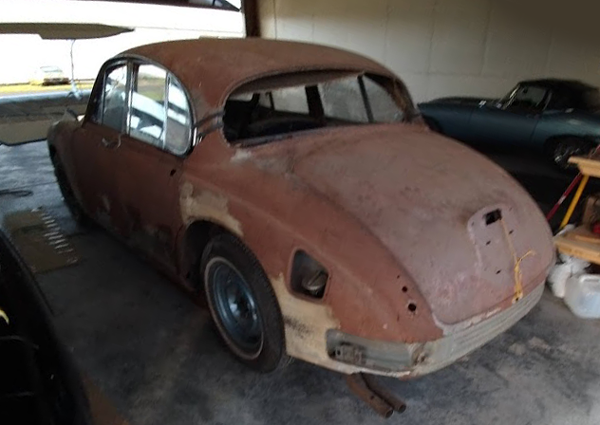
I was surprised then to find the engine turning free! So here I was… with a derelict Mark II in need of a lot of work. I proceeded to do a compression check and behold all good numbers on 6 cylinders! At this point a plan started to formulate itself. My intention is to protect the car from further decay, assemble all the parts stored in many boxes and such and see if the engine could fire up for a few minutes. I assumed then I could pass it on to somebody that would be committed to take to the next level. So I proceeded with caution.
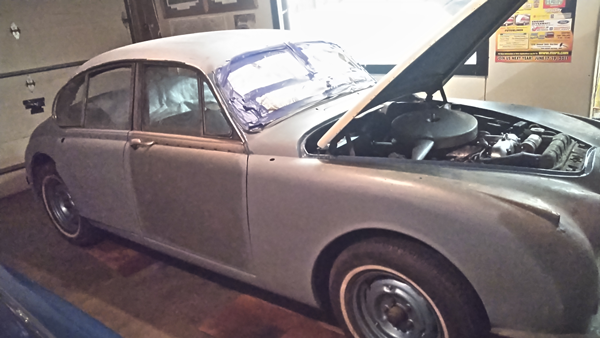
The first order of business was the removal all the surface rust from the body. After many weekends of endless sanding, grinding, and stripping, I reattached the doors and hood. The body being in bare metal I quickly applied a coat of etching primer, then a few coats of regular primer more sanding. I then proceeded to throw a coat of paint to seal the body, (and the term “throw” is quite accurate). My painting skills are marginal to say the least, although I am able to do a pretty decent job at piece work. Painting the whole car is beyond my competence at this point. It is good way to practice but the result is not the best.
Next step was to remove some of the more obvious body defects. I then applied a coat of regular primer. The car was already looking much better! In the meantime I replaced a few ignition parts and some cooling hoses. The existing ones were crumbling as I disconnected them. I installed a temporary fuel tank and an electric pump and tried to see if I could get the old twin cam 6 to roar to life. After several mishaps, I was able to run the engine for 5 to 10 seconds at normal idle. I was amazed after all this time!! During the winter I reassembled the interior, cleaned the 2 SU carburetors and threw in a decent carb kit, then replaced the coolant.
My aim at this point is to find a new family for it so it could be taken to the next level, it deserves it. Drop me a line if you’re interested in learning more about it! straigh8@gmail.com



